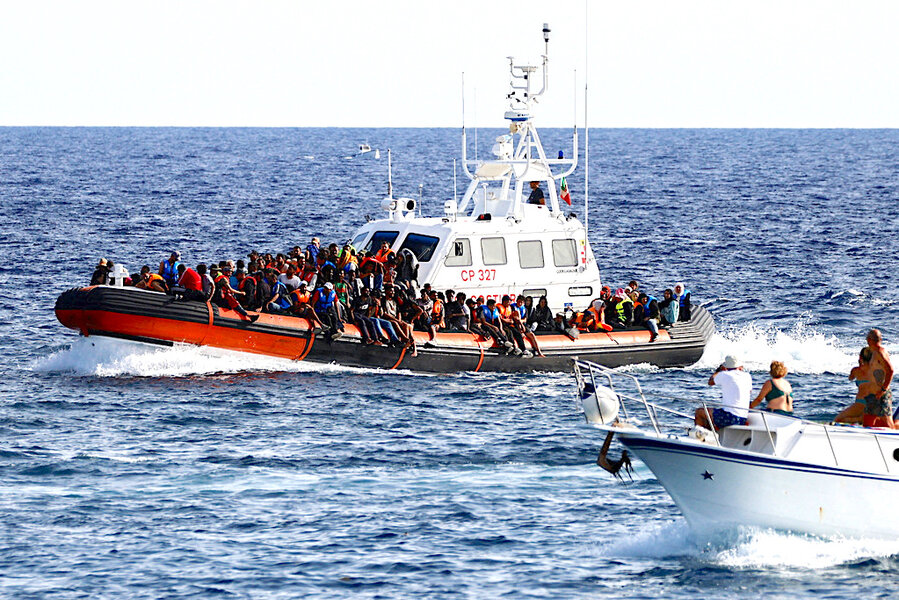Europe’s model on migration
Loading...
At a moment when a majority of Americans say illegal immigration is their country’s top problem, Europe has shown them a way forward. On Wednesday, the European Parliament passed major reforms on migration policy that, according to one negotiator, are “a triumph of European values over political stagnation.”
One value embedded in the reforms is equality. Migrants seeking asylum will be treated more uniformly – and quickly – across the Continent. And the 27 member states of the European Union will be required to equally share the burden of taking in migrants who now largely enter through the Mediterranean countries of Italy and Greece.
One benefit of the so-called New Pact on Migration and Asylum could be greater EU unity, especially ahead of parliamentary elections in June. In the last EU-wide elections, in 2019, migration was the top concern of citizens. The new pact, writes Lena Düpont, a German politician in the European Parliament, can “create reliability among [EU] partners and create trust in overcoming challenges together.”
Ms. Düpont adds in a piece for the European Policy Centre that “the EU has stumbled from one emergency solution to the next [on migration] while becoming more vulnerable to polarised and overheated debates.” It has “failed to cherish its very own values” and find a “balance between protecting fundamental rights and effectively managing borders.”
For nearly a decade, the EU struggled to find a consensus on migration. The trigger for a fresh dialogue began in 2015-2016 when more than million people fleeing Mideast conflicts poured into Europe, fueling the rise of anti-immigrant parties. Last year, the EU saw a seven-year high in applications for asylum and the biggest increase in illegal entries since 2016. Also, both Russia and its ally Belarus have “weaponized” migration by sending Middle Eastern migrants into EU countries.
The breakthrough for an EU deal began in 2022 after the influx of some 4 million Ukrainian refugees fleeing the Russian invasion – the largest refugee movement in Europe since World War II. The warm welcome of the Ukrainians showed that disagreements over migration could be solved. Compassion triumphed over fear.
The new EU pact could take two years to implement. And the way it balances competing views might be challenged in coming elections or in the courts. Still, says German Interior Minister Nancy Faeser, “after years of tough negotiations, ... we have overcome a deep division in Europe.” And that sets a helpful example for what many Americans expect in their country.







